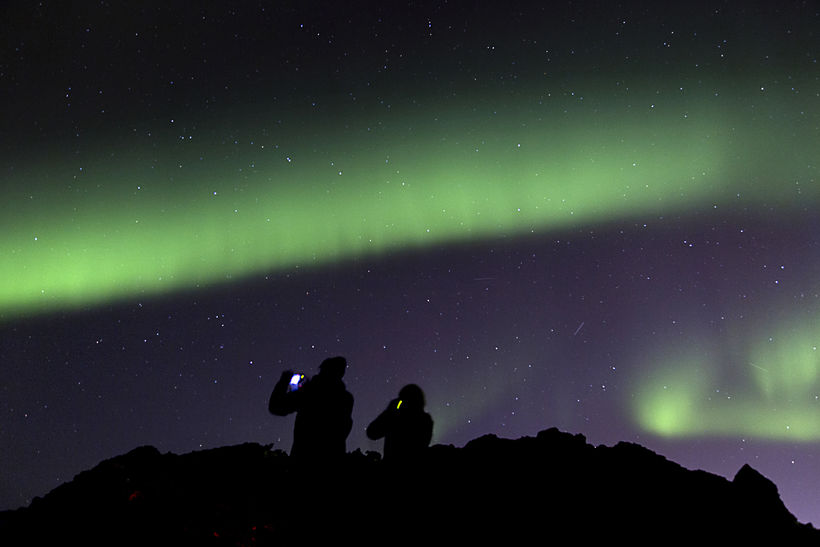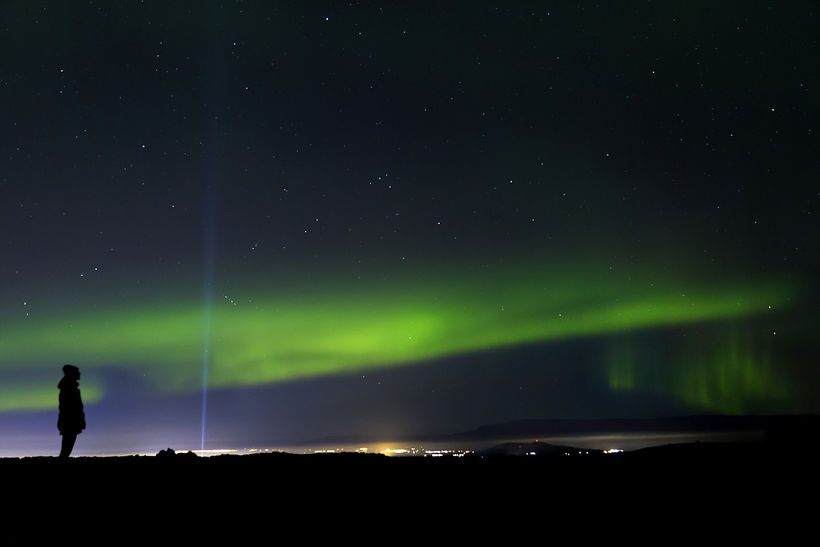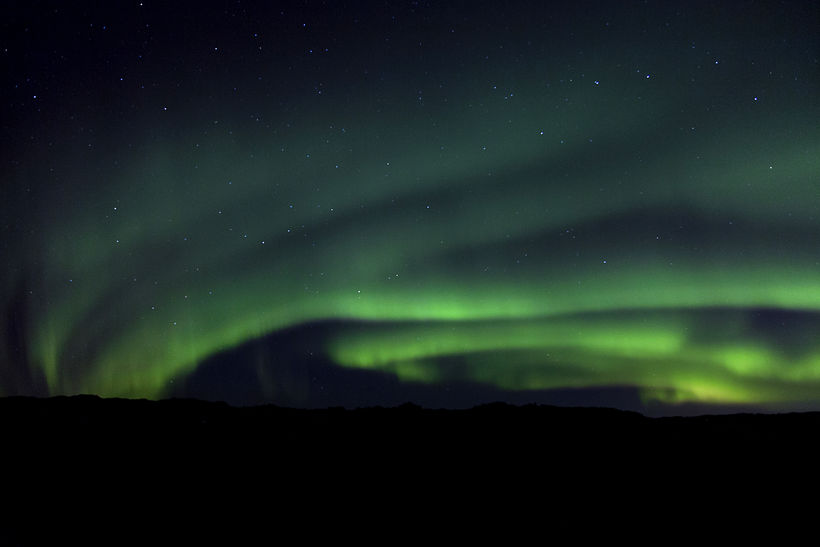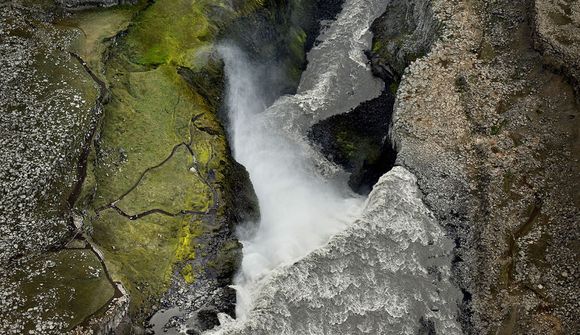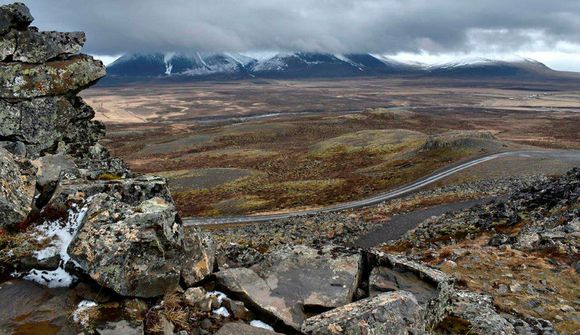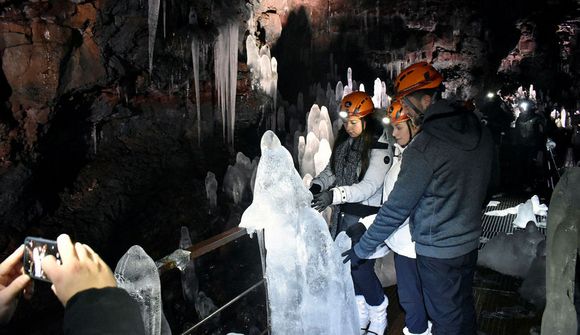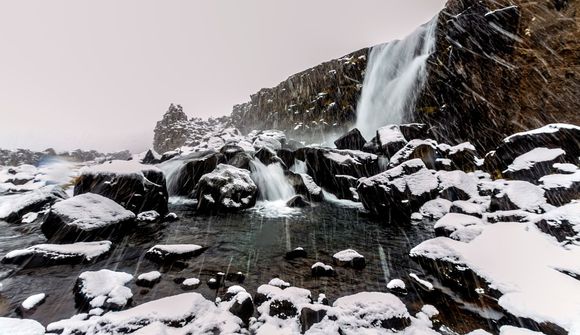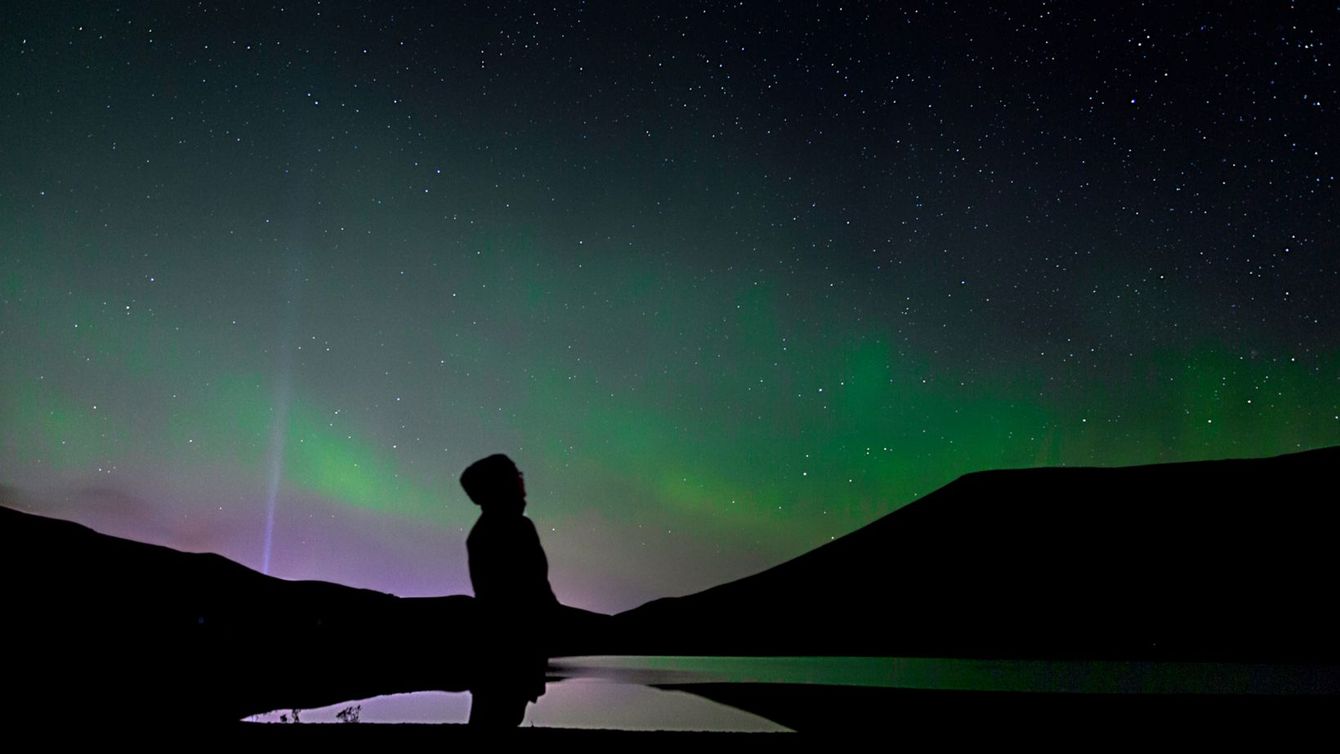
Hunting for the northern lights
We leave the lights of Reykjavík behind. I'm on a small bus in the middle of total darkness. I could be lost in space if it wasn't for the lights of the bus cutting through the dark in front of us. It's late at night, people in the city are getting ready for bed, but me and my bus mates are getting ready to hunt for the northern lights.
We leave the lights of Reykjavík behind. I'm on a small bus in the middle of total darkness. I could be lost in space if it wasn't for the lights of the bus cutting through the dark in front of us. It's late at night, people in the city are getting ready for bed, but me and my bus mates are getting ready to hunt for the northern lights.
We leave the light pollution behind. They say the street lights create a hue over the city, which makes it harder to see the spectacular colors of the northern lights. The light pollution diffuses the colors, and therefore we need to go into the countryside, into the wilderness. I can't wait.
Baldur is our chief on the hunt. Bulky guy, grey haired, bearded, wonderfully vikingish. He says we are going to try to catch the northern lights: "Just like when you go fishing; sometimes you catch a big fish, sometimes a small fish, and sometimes you catch nothing at all. Northern lights work just like that; we might catch a glimpse of them, we might get a magnificent show covering the whole sky for hours or we might see nothing at all."
I don't really like the sound of that. I don't want to try to catch them I want to succeed. I want to see them tonight. Northern lights, I'm on my way!
Baldur explains that the spectacle of the northern lights requires dark and partly clear skies. Conditions have to be right. If not, no show. I look out the window into the sky. It's certainly dark. It's always dark in Iceland, except when it's always bright. But the sky is not clear. Billion little clouds are holding tight to each other. Clinging to each other and not letting go. Like one big tightly knit duvet between us and the northern lights. "The clouds move fast," I can hear Baldur say. "It can all change in a minute." These clouds don't look like they are going anywhere. Just like when you go fishing; sometimes you catch a big fish, sometimes a small fish, and sometimes you catch nothing at all.
"These lights are a fickle beast, very difficult to deal with. When they come, they come in bursts. They last a few minutes, hours, or a whole night. You never know. They are never the same and they take on the most incredible shapes." They are so mysterious even NASA can only tell one hour ahead of time if they will be showing that night and where. Quite an impressive beast.
"The sun spits out magnetically charged particles into space that travel with the solar winds to earth. This takes about 2-3 days, which is the reason for why we can't forecast when we can see the northern lights. And when the particles hit the magnetic shield around earth they create the northern or the southern lights. Simple enough, right?" Yes Baldur, I actually almost get it. And I even think I understood it right that this magnetic shield is closer to earth at the top and bottom of it and that's why the lights are stronger in the north and south than around the middle of the earth. Makes sense. Can we just see them now?
We drive up onto a heath. I guess getting closer to the sky and the Aurora Borealis both. The Italian astronomer Galileo Galilei named these lights so beautifully after Aurora, the Roman goddess of morning. He thought that the lights he saw were due to sunlight reflecting from the atmosphere. He was wrong. Baldur should have been there to explain things to him.
"Green is the most common color of the northern lights, and most likely the one you will catch tonight," chief hunter tells us. "White is the second most common color and then some kind of a purple, pinkish color. Red and blue exist but are rarely spotted. They are also harder to grasp for the human eye, but cameras can catch them quite beautifully. The lights are seen at three different levels of height from earth. Up to 100 km above earth is where we see red and blue. 100-240 km above earth is where we see green, white and purply colors, further than 240 km from earth is where we see ruby red."
We continue driving and Baldur tells us to look for any faint glimpse of greenish light. If we see it we should let him know. With my nose pressed up against the window of the bus, looking to the north I carefully cover each inch of the sky trying to catch at least a tiniest spark of green light, mint green light, deep blue, fire red, purple. Any color is fine with me. All I need is just a flicker of light. Just anything that might develop into something bigger, into a good show. All I catch is total darkness. Black is the only color I was not looking for.
These colorful phenomena are obviously completely unreliable . They just show up at their own convenience and nobody else's. Some old Icelandic stories say they are elfin queens dancing around in the sky. A 15th century Icelandic poem says are they a clash of valkyries riding into battle. I don't know which it is or what it is, but I know these Icelandic legendary ladies make people travel half of the world to look at their show. Just to make them wait.
I didn't go on this hunt for the northern lights just to admire their beauty, but also to know what my reaction to them will be. I have heard that some people cry out loud when they see them for first time. Some cry tears and others laugh. Some ask their beloved's hand in marriage, overcome with emotions. I even heard the Japanese say it's good luck to conceive a child under the northern lights. Although I have no plans about taking it that far - how will I react?
"Standing under the northern lights with a group of people who have never witnessed them before can be like being on a football stadium," Baldur tells us, "and each time a new wave of lights makes an entrance into the celestial sphere, the spectators yell out loud like God just scored a goal." That sounds good to me. I could do with that. Such is the power of these fickle divas of the sky, they make people yell in awe. All but me, because I see nothing.
Baldur decides we should stop by this lake hidden in between mountains where there are a series of old craters and volcanoes. We might have a chance there. I walk in the darkness through the black sand to the shore of the lake and look for northern lights. Never in my life have I seen so many stars. Billions of them. And I swear I can see the reflection of the biggest stars in the lake. Is that even possible? Or am I just a star struck little tourist fool, desperately wanting to see something out of this world?
Wait! If I can see each tiny little star in the sky, it must mean that the sky is clear. It means I should be able to see some northern lights. I turn around to look and I see outlines of the mountain range surrounding us against the dark sky. On top of the mountain is a thin veil of bright green light peaking over the rim of it. My heart starts pounding. Come on now northern lights, show yourselves! Come out and dance, the sky is all yours!
I wait. We wait. Nothing happens. Finally Baldur asks us to get back into the bus, we are going to try elsewhere.
More driving in the dark. We go higher into the mountains and it becomes colder. In the headlights of the bus frost covered gravel shines.
Most of us city children have never been in total darkness before, where there is no light pollution. Baldur says once we are outside it can take us up to 10-15 minutes to develop a good enough night vision to catch the subtlety of the colors. "So please no phone lights out there. You can't take any pictures on the phone anyway, so don't turn them on. If you want to take pictures of the lights, you need a proper camera," Baldur warns us. "And when cars pass by on the road, turn your heads and look away. Don't let them ruin your precious night vision… wait!" he turns to the driver. "I see a white bow stretching from east to west, an arc of Aurora Borealis. That might turn into something." The bus driver finds a place to get out of the road. "If it dims again we'll leave," Baldur says as we once more herd out of the bus.
I can hardly see anything outside. I feel some lava stones slide from under my feet, others are sturdier and make me wobbly instead. I roam around like a zombie, not able to make out my environment or the other tourists around me. My night vision has not kicked in yet. I look up into the sky and wait.
And then it happens. The white arc turns green. It starts to move around and then leisurely dissolve. Red curtains descend from it. These two colors dance together for a while and then give birth to a purple wave. Slowly the green arc multiplies. There are two of them, then three, four, five arcs stretching from one horizon to the other, until they all melt into one big gracefully-swirling sheet above us. We are left gasping and dumbfounded.
My knees give out and I feel pulled down to the ground. In my expensive down jacket and fancy handknitted wool hat, I lie down on the dry lava and wet moss. There I just stay on my back and stare at this wondrous wonder. And I feel so infinitely small. So terribly tiny in the unimaginable endlessness of this vast universe. So awfully insignificant in the big scheme of time and space. But at the same time still so proud to be a part of this crazy world of marvel. A universe that can create something so magnificent and so moving had also created me.
Magnetically charged particles, dancing elfin queens, fighting valkyries, I don't know what the northern lights really are or how I want to perceive them. But I know they have always been there and that they will always be there. If we watch their show or not, they don't care. I saw the show. Tiny little me lost in a black desert on planet earth lay there gazing at the northern lights with awe in my heart and dust in my eye. Watching them, it felt hard to breathe. Breathe all this in.
I went hunting and I caught a big one.


